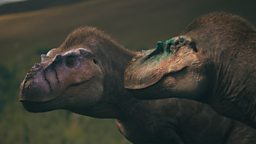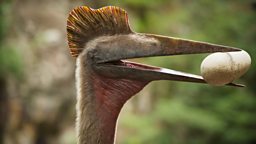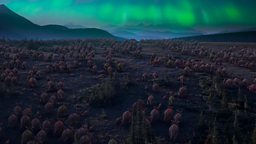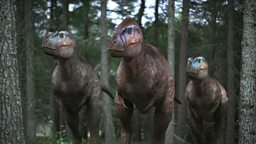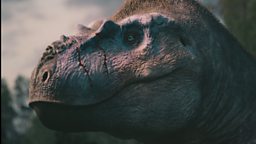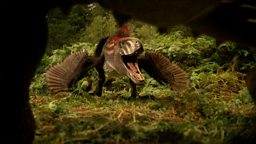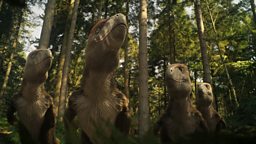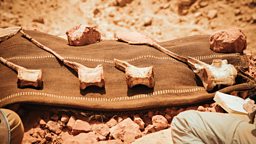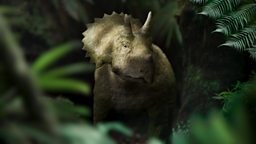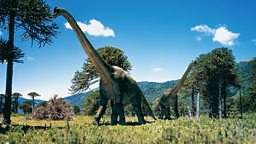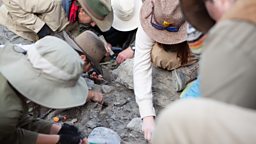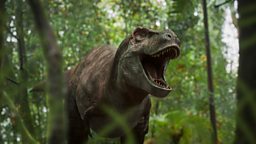Dino guide: Creating Utahraptor
by Jay Balamurugan, series assistant producer

Dromaeosaurs, or more popularly, raptors, are easily some of the most famous of the dinosaurs, thanks to their starring role in a certain blockbuster in the early 90s. They are also the dinosaurs that changed how the world saw dinosaurs. When Deinonychus, a wolf-sized raptor, was uncovered and studied in the early to mid-20th century, palaeontologists were astounded.
The largest and most formidable of the raptors.
This wasn’t one of the slow, sluggish, reptilian giants they thought they knew. This was an agile, lithe, efficient predator – and so, palaeontology was changed forever. Dinosaurs, long thought to be little more than dull, cold-blooded, oversized lizards, were cast in a new light, revealing them to be warm-blooded, dynamic, and active creatures. And that was only the start.
In Band of Brothers, we meet Utahraptor. The largest and most formidable of the raptors. It embodies everything about our current understanding of dinosaurs, and it is obvious from the first second you see them. They are communicative and calculated, move quickly and purposefully in an exceptionally bird-like manner, and most obviously, are covered in a full coat of feathers.
Working on the designs for the Utahraptor with the team was an absolute joy but was by no means an easy task. This animal was complicated. Utahraptor has 6 different types of texture across its body: scaly skin, non-scaly skin, tough keratin, fur-like body feathers, short round body feathers, and long complex wing feathers.
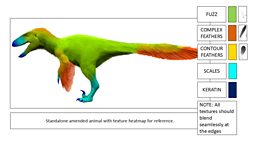
Working closely with palaeontologist Jim Kirkland who has been studying Utahraptor for decades, as well as our dinosaur anatomy expert and series consultant Scott Hartman, I put together a heatmap, showing exactly where each of these textures would go, based on fossils of related raptor species which show a variety of skin and feather impressions. That isn’t even getting onto the wings! The way the three different types of complex feathers layer over each other, their attachment points, the way the arm folds – an enormous amount of research work went into figuring out how these wings worked.

Once the design brief was handed over to the VFX team, they got to work. Feathers are notoriously one of the hardest things to get right in the 3D world. In a process known as grooming, each individual feather or strand of fuzz is put in place on the digital model. At this stage, the animal looks, hilariously, a bit like a hedgehog or pincushion, with straight fuzz and feathers sticking out at all angles.
From there, the VFX artists cut, comb, and style the groom to get it to lie in the right direction and interact with the strands around it realistically. It’s quite fun to imagine our Utahraptor going in for a digital salon day to get prettied up for the big screen.
Now our raptor is fuzzy and flappy, it’s time to think about colour. The age old saying repeated in dinosaur books around the world is ‘we don’t know what colour dinosaurs were.’ I’m not sorry to say that statement is no longer true! Some fossilised dinosaurs are preserved so well that we have evidence of pigment cells known as melanosomes in their feathers.
While we don’t know the colours Utahraptor itself may have sported, we now know that related dinosaurs had a wide range of colours: orange-brown racoon stripes, black and white wings with red head crests, iridescent purple-green-black plumage, and more!
Working from these colour palettes, while being inspired by modern predators such as birds of prey, wild dogs, and bears, I drew up a series of concepts for our Utahraptor, and then, working with the director and production team, we made our selection – see if you can spot which one ended up being the basis for our final design.
All in all, after months of work, Utahraptor came to life – and it was a favourite among the team. We couldn’t stop talking about it the day the final VFX model came through. I am so thrilled for audiences to come face to face with this fearsome, gorgeous creature.
